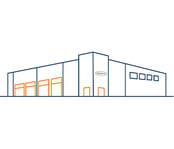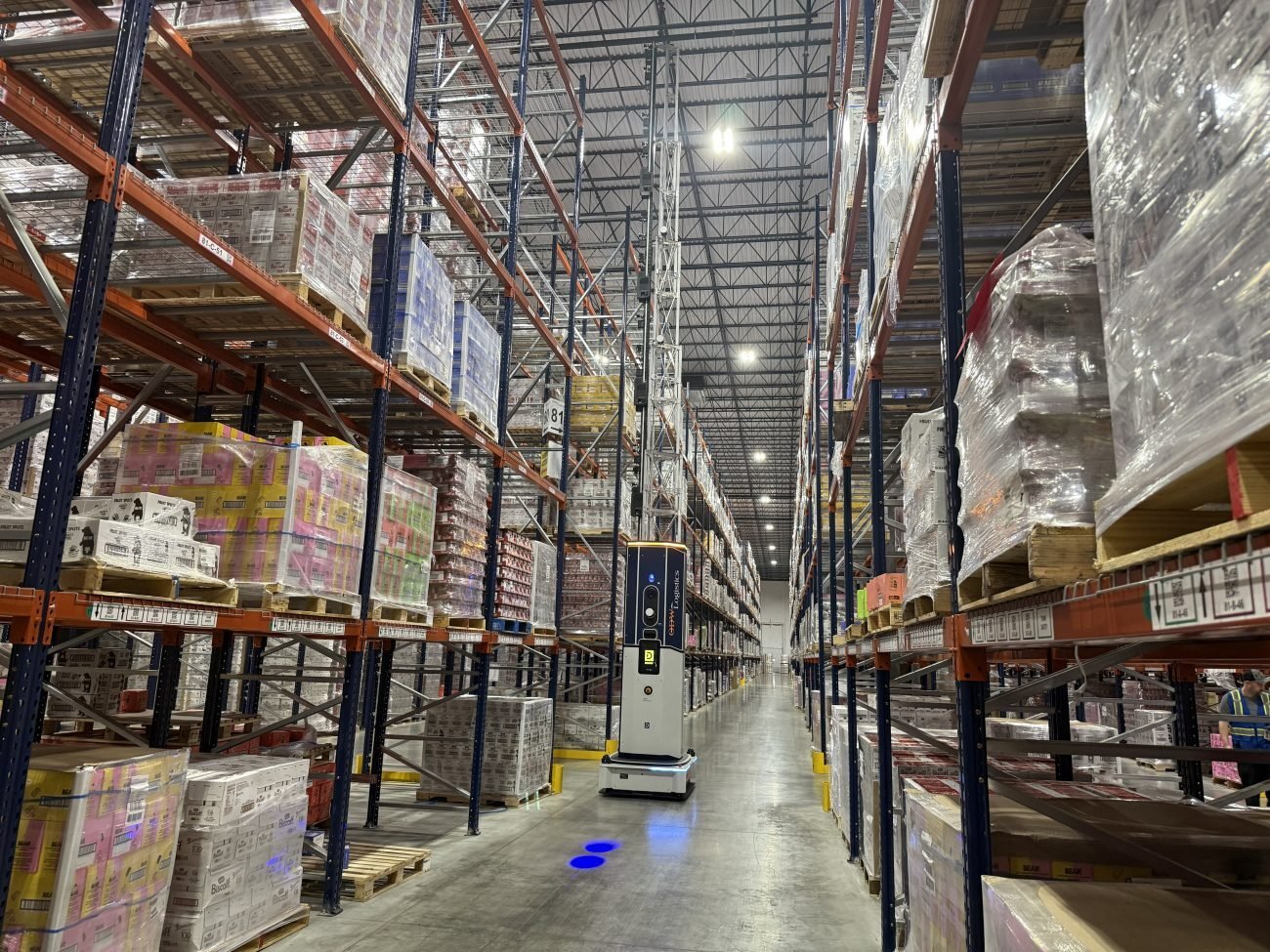
In response to pressures brought on by the omnichannel revolution, more and more retail distribution leaders are questioning whether their legacy warehousing software can keep up with the times.
To help manage today's bustling retail fulfillment operations, most DCs rely on warehouse management systems (WMS) to track inventory, manage order picking, and oversee tasks like shipping and replenishment. Like a reliable family car, the typical WMS may not be flashy, but it helps to make sure the goods get from point A to point B.
However, the retail industry is changing fast, and the repercussions are being felt all the way back to the distribution center. For one thing, the advent of omnichannel commerce has changed the game where many DC operations are concerned. Facilities that were set up to handle store replenishment are increasingly being tasked with processing high volumes of direct-to-consumer orders. It doesn't help that online giants like Amazon.com Inc., Target Corp., and Walmart Inc. keep raising the service bar, conditioning consumers to expect same-day order processing and up-to-the-minute order-status information.
A specialized WMS can help meet those rising demands, but the decision to launch a major software overhaul isn't one to be taken lightly. So how can DC managers tell when it's time to petition their boss for a brand-new WMS or at least to upgrade their trusty old software? As is so often the case, there's no universal answer. The timing will depend on each operation's individual circumstances.
A SHIFT IN THE MIX
In the past, some customers have dealt with the issue of competing fulfillment demands by running two WMS systems in the same building, says Chris Shaw, director of product marketing and analyst relations at software developer Manhattan Associates. One system would handle wholesale orders and store replenishment, while the other managed direct-to-consumer orders.
Today, there's no longer a need to go with the dual-system approach, he says. Some of the newer warehouse management systems can both build efficient waves for bulk orders and handle waveless processing for individual items, he says.
However, users still have to figure out when the time is right to upgrade to a WMS that can handle the strain of e-commerce. Generally speaking, that decision will come down to the software's ability to deliver the required speed and throughput, accommodate fluctuations in order demand, and meet technical requirements such as ensuring consumers' private information is kept secure, according to Matthew Butler, director of industrial strategy and supply chain execution at JDA Software Group Inc.
Not surprisingly, the decision becomes more complicated when the user is a third-party logistics service provider (3PL) that serves a wide array of clients, each with different requirements. One such company is ODW Logistics, a Columbus, Ohio-based 3PL whose clients range from companies in the healthcare and beauty, food and beverage, and consumer goods sectors to industrial and automotive sector players.
For the past 20 years, the company has relied on a legacy WMS that allowed it to process a mix of big-box retail orders and individual e-commerce shipments. But the rise of e-commerce has changed the dynamic, says Macy Bergoon, ODW's vice president of information technology.
"An order is an order, and a shipment is a shipment, but when the mix changes from [truckload and less-than-truckload freight] to parcel, UPS, and FedEx, the number of orders you have to handle is reversed," Bergoon says.
Instead of sending WalMart 100 orders with 10,000 pieces each, with e-commerce you have to send 10,000 orders with one piece each.
Macy Bergoon | VP of Information Technology
ODW Logistics
With 17 DCs around North America, ODW collaborates with its clients on choosing the optimal equipment for their needs, including software. And in response to the market's shift to e-commerce shipments, the firm recently began to offer its customers a choice between its legacy WMS platform with basic functions and a "tier one" WMS—in this case, a product from HighJump Software Inc. While it typically costs more to run, the high-end WMS offers advanced capabilities such as integrating with enterprise resource planning (ERP) software and handling real-time consumer queries about the status of their orders.
The latter is particularly important because many of ODW's retail clients want real-time order information they can share with their customers, Bergoon says. "If a customer can cancel their order at any given time, that means the days of saying, 'Hey, we already picked your order and it's on its way to the retail store' are over. Right up until the moment that order gets put on the truck, you have to have the ability to stop the order, because the retailer is offering that option to the consumer."
In the end, the decision when to upgrade or replace a WMS generally comes down to what kind of return on investment (ROI) the user can expect to get, he says. "Some businesses don't require the cost, complexity, and functionality that a tier one system provides, so there wouldn't be an ROI for them. With a pallet-in, pallet-out customer, they don't need that, so [they might opt to stick with] a legacy WMS."
COMPETING DEMANDS
Turning to the question of why traditional warehouse management systems tend to be an awkward fit for e-commerce fulfillment operations, Marc Wulfraat, president of the supply chain consulting firm MWPVL International Inc., says there are a number of factors in play.
One reason for the mismatch is technical, Wulfraat says. Traditional warehouse management systems are designed to plan, release, and push out one wave at a time, a strategy that works well for retail store distribution and even small to midsized e-commerce environments. However, as throughput volumes climb, facilities often need to install automated material handling equipment, which requires that the WMS be tightly integrated with the warehouse control system (WCS) subsystems that control the equipment, a feature not supported by many basic WMS products.
Another technical hurdle that prevents traditional warehouse management systems from meeting the demands of e-commerce involves data exchange, says Paul D'Arrigo, chief operating officer at Spend Management Experts, an Atlanta-based transportation consulting firm.
D'Arrigo explains that data exchange becomes an issue in cases where omnichannel retailers fill e-commerce and store replenishment orders from a shared pool of inventory, or fill online orders from inventory at retail stores. While those strategies can minimize operating costs, they also require companies to maintain a single real-time accounting of their stock, so a sudden rush of online orders doesn't result in empty store shelves and disappointed shoppers, he said. A tier-one WMS can prevent that kind of out-of-stock scenario by collecting sales data through instantaneous application programming interface (API) connections or frequent Web server calls—a significant upgrade over the batch updates most legacy WMS platforms provide, he said.
As the online shopping revolution continues, more retail warehouses and DCs will face the question of if—and when—they should replace their legacy WMS. In the end, the decision will come down to two overarching considerations: the nature of your business and the needs and expectations of the customers you serve. Or to put it another way, the best strategy for choosing software will always be the advice your grandfather gave you—pick the right tool for the job.
Source: https://www.dcvelocity.com/articles/20190228-is-it-time-to-replace-your-wms-/
ODW Logistics
Since 1971, we’ve been providing warehousing, distribution, and transportation solutions for hundreds of brands. We operate as an extension of your business to control costs throughout your supply chain that deliver you a competitive advantage over your competition.RECENT POSTS
Introduction: The Evolving Landscape of E-commerce Fulfillment In the fast-paced world of online retail, customer expect...
Dec. 18, 2025 09:26 AM
ODW Logistics has been named a Top 50 Third-Party Logistics (3PL) Provider by Global Trade magazine and recognized in th...
Dec. 17, 2025 09:33 AM
December 3, 2025
Dec. 04, 2025 09:10 AM









.jpg)

